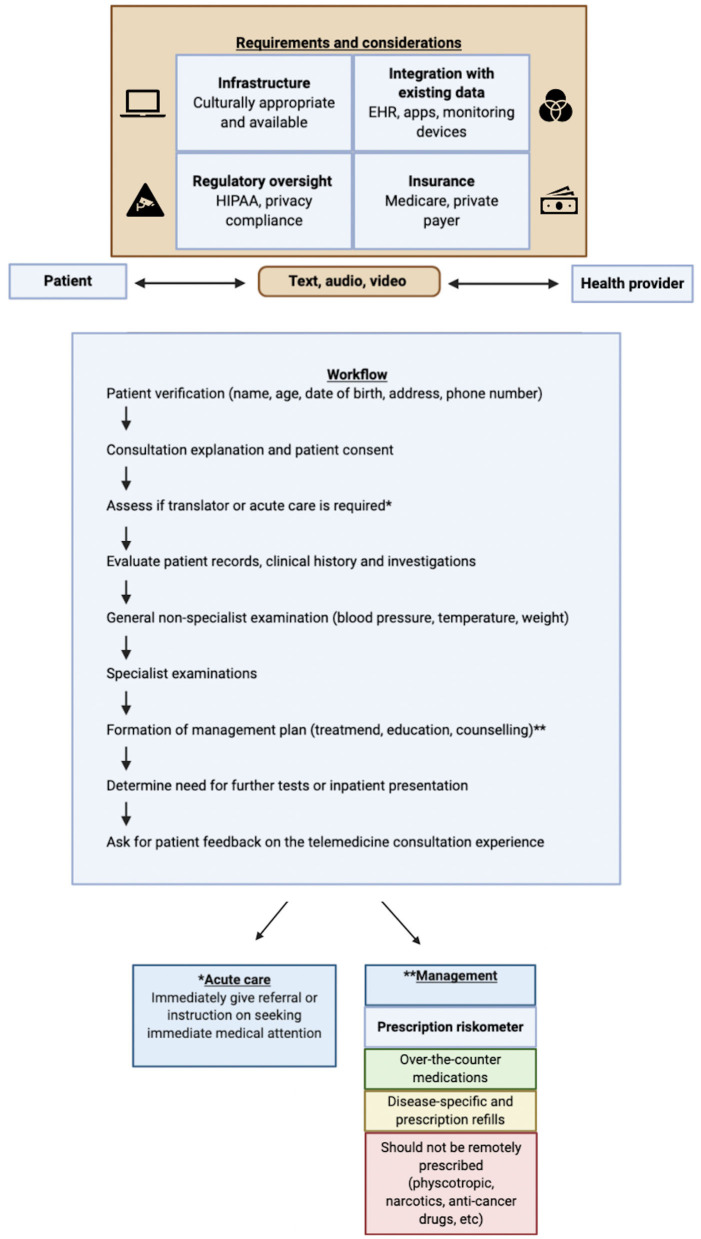Figure 1.
Various requirements and considerations for streamlined telemedicine implementation and the Pandemic Health System REsilience PROGRAM (REPROGRAM) consortium workflow for routine teleconsultation and management of patients. Patients and healthcare providers can interact through telemedicine via text, audio, or video means. Effective telemedicine has several requirements, including culturally appropriate and available infrastructure; regulatory oversight and privacy compliance such as through the Health Insurance Portability and Accountability Act of 1996 (HIPAA); integration of technologies with existing data such as electronic health records (EHRs), apps, and monitoring devices; and insurance coverage such as Medicare or private-payer schemes. Credentialing on both sides is essential. The consultation should start with verification of the patient's identity through name, age, phone number, date of birth, and address. The physician should then clearly specify that this is a telemedicine consult and that no audio or video of the communication will be recorded. It is imperative that health record information is protected. The physician should then clearly and explicitly ask for consent, whether that be verbal, text, or video. At the start of the consultation, the physician should assess if acute care is required and make a cursory determination if telemedicine consultation is sufficient. If necessary, the physician should supply an immediate referral or advise the patient to seek immediate medical attention. During a typical consultation, the patient will be evaluated; and specific diagnostics and treatment would be recommended based on the assessment of the healthcare provider; and follow-up could be scheduled either in person or virtually. The physician should go through records, clinical history, and investigations including pathology and diagnostic reports, and obtain any additional information that the patient can provide. A general, non-specialist examination should be obtained, and any vital signs that the patient has the means to measure should be gathered.

